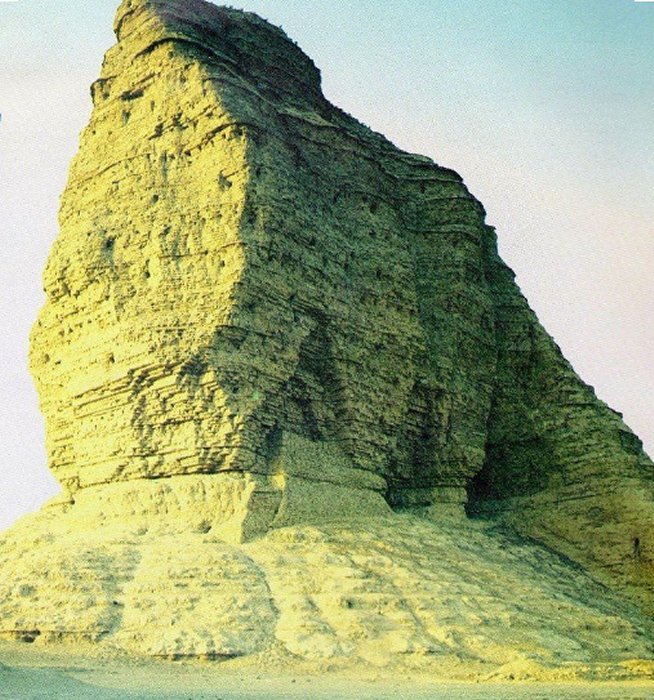Ancient Ziggurat Of Aqar Quf Dedicated To God Enlil
A. Sutherland - AncientPages.com - Aqar Quf, currently an archaeological site of the ancient city of Dur Kurigalzu (or the “Fortress of Kurigalzu”) is located in central Iraq, 30 km northwest of Baghdad, on the left bank of the Euphrates.
It was founded in the 14/15th century BC by the Kassite King Kurigalzu I, (c. 1400–c. 1375) and later the city was several times controlled by the Assyrians and Elamites and in the middle of the 11th-century, BC destroyed by the Syrians.
The ziggurat at Aqar Quf rises 180 feet above the desert west of Baghdad. Image credit: Spc. David Robbins - Working to Restore Iraq's Past for the Future - CC0
The ancient site, which was made up of several tells, was the capital of Babylonia during the reign of the Kassite dynasty (ca. 1600 BC – 1155 BC). After the fall of the Kassite Dynasty, the city was abandoned by the late 14th century AD.
Around the 1940s, an Iraqi and British team led by Taha Baqir and Seton Lloyd found approximately a hundred clay tablets and fragments of a statue decorated with texts in Sumerian. It is a representation of the Kassite King Kurigalzi, who reigned over all of Mesopotamia from his city of Kurigalzu.
Additionally, excavations revealed the ruins of Aqar Quf ziggurat, approximately 3,500 years old. The lowest terrace of the ziggurat ruins was restored and the structure’s foundations are 69 by 67.6 meters.
The ziggurat - dedicated to the god Enlil - is an unusually well-preserved building, with a mud-brick core that still stands to a height of about 170 feet on the flat plain in the vicinity of Baghdad. Other structures included three temples and a palace, where the walls of the corridors, were found decorated with numerous male figures (perhaps court dignitaries), and several sanctuaries.
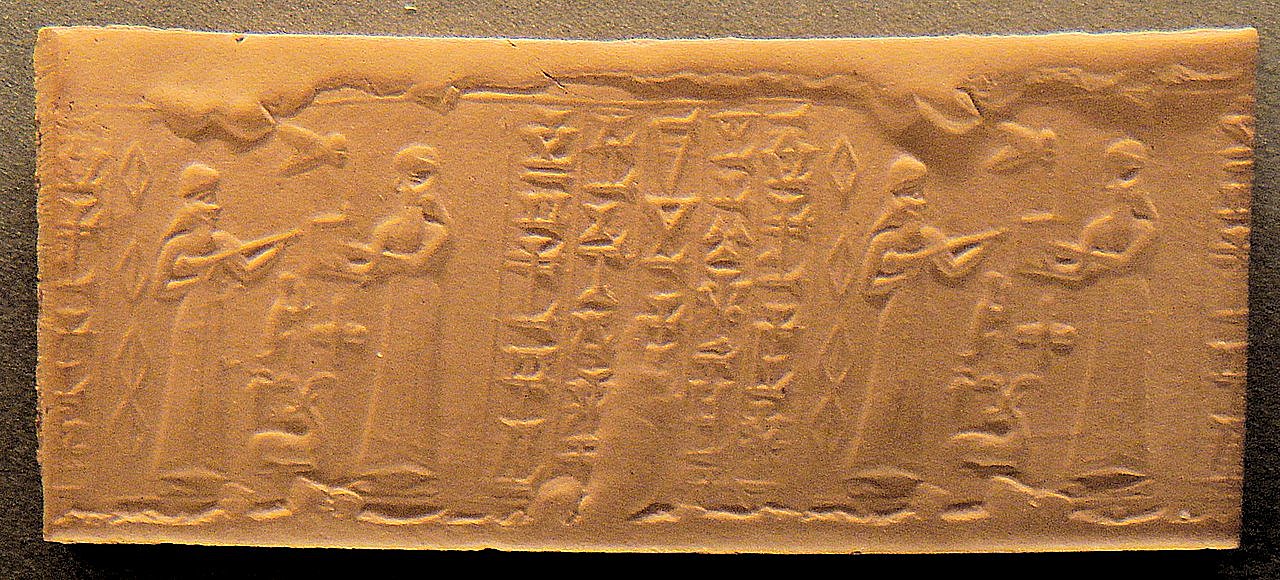 Cylinder seal of Kassite king Kurigalzu II (c. 1332–1308 BC). Louvre Museum AOD 105. source
Cylinder seal of Kassite king Kurigalzu II (c. 1332–1308 BC). Louvre Museum AOD 105. source
Interestingly, archaeologists also stumbled upon the remains of another place, which existed there at least a century earlier and was probably called Daksa or Parsa.
At its peak, the city with several ramparts, extended over an area of 225 ha.
The original homeland of the Kassites is not well-known, but appears to have been located in the Zagros Mountains, (now the Lorestan Province of Iran).
The ziggurat of Dur-Kurigalzu was built in the 14th BC by the Kassites’ king Kurigalzu. The central structure is composed of sun-dried bricks. Source
They were a warlike people that invaded Babylon during the 16th century BC and ruled the area for almost six centuries. It is claimed that their rule was the longest in the history of ancient Babylon.
The Kassites were powerful rulers and their royal cities were powerful as well. In addition to Babylon and Dur-Kurigalzu (Aqar Quf), the almost equal city of Nippur was the most important provincial center. Nippur once virtually abandoned c. 1730 BC, but later rebuilt in the Kassite period, as well as Larsa, Susa, and Sippar.
Among the achievements of the art associated with the rule of the Kassites, is the production of modeled bricks. From it, temples decorated with a frieze from burnt brick were erected. This technique was later taken over by the builders from the New-Babylonian period and by the Persians.
Their capital city, Dur-Kurigalzu, was destroyed around the 12th century by the Elamites and the city was burned.
Written by – A. Sutherland - AncientPages.com Senior Staff Writer
Copyright © AncientPages.com All rights reserved. This material may not be published, broadcast, rewritten or redistributed in whole or part without the express written permission of AncientPages.com
Expand for referencesMore From Ancient Pages
-
 Was Biblical King David Unknowingly Part Of A Secret Master Plan?
Biblical Mysteries | Jul 1, 2021
Was Biblical King David Unknowingly Part Of A Secret Master Plan?
Biblical Mysteries | Jul 1, 2021 -
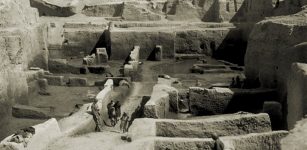 Iraq’s Ancient Kish City Survived The Great Flood – Today It’s Neglected And Lies Buried In Sand
Civilizations | Sep 24, 2015
Iraq’s Ancient Kish City Survived The Great Flood – Today It’s Neglected And Lies Buried In Sand
Civilizations | Sep 24, 2015 -
 Was King William II Murdered In The New Forest?
Featured Stories | Aug 5, 2021
Was King William II Murdered In The New Forest?
Featured Stories | Aug 5, 2021 -
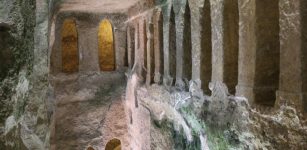 Largest In Europe Underground Church Of Saint-Jean of Aubeterre Built By 12th Century Benedictine Monks
Featured Stories | Feb 12, 2016
Largest In Europe Underground Church Of Saint-Jean of Aubeterre Built By 12th Century Benedictine Monks
Featured Stories | Feb 12, 2016 -
 Silver Jewelry Buried In Leather Purse Discovered In Bulgaria
Archaeology | Apr 5, 2016
Silver Jewelry Buried In Leather Purse Discovered In Bulgaria
Archaeology | Apr 5, 2016 -
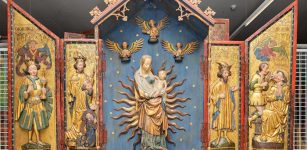 Secrets Of Nanomaterial From The Middle Ages Examined By Scientists
Archaeology | Oct 11, 2022
Secrets Of Nanomaterial From The Middle Ages Examined By Scientists
Archaeology | Oct 11, 2022 -
 Mystery Of The Haraldskærkvinnan (Haraldskærwoman) – Bog Body Of A Viking Queen?
Featured Stories | Apr 8, 2024
Mystery Of The Haraldskærkvinnan (Haraldskærwoman) – Bog Body Of A Viking Queen?
Featured Stories | Apr 8, 2024 -
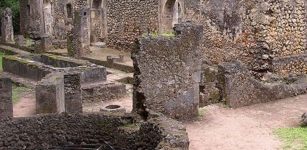 Unsolved Mystery Of Gedi Ruins Protected By The ‘Old Ones’ – Why Did People Leave?
Civilizations | Apr 2, 2019
Unsolved Mystery Of Gedi Ruins Protected By The ‘Old Ones’ – Why Did People Leave?
Civilizations | Apr 2, 2019 -
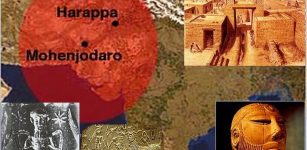 Indus Valley Civilization Far Ahead Of Its Time Has Baffled Scientists For Centuries
Ancient Technology | May 18, 2017
Indus Valley Civilization Far Ahead Of Its Time Has Baffled Scientists For Centuries
Ancient Technology | May 18, 2017 -
 Mysterious 70-Million-Year-Old Underground Village And Magnificent Tower Of Eben-Ezer In Belgium
Featured Stories | Mar 20, 2017
Mysterious 70-Million-Year-Old Underground Village And Magnificent Tower Of Eben-Ezer In Belgium
Featured Stories | Mar 20, 2017 -
 Mysterious Gympie Pyramid: Evidence Of An Ancient Lost Civilization In Australia?
Civilizations | Feb 13, 2020
Mysterious Gympie Pyramid: Evidence Of An Ancient Lost Civilization In Australia?
Civilizations | Feb 13, 2020 -
 Controversial Hollow Earth Theory – Scientific Facts Presented By Researchers – Part 1
Featured Stories | Jun 21, 2019
Controversial Hollow Earth Theory – Scientific Facts Presented By Researchers – Part 1
Featured Stories | Jun 21, 2019 -
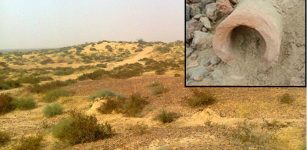 Indus Civilization And Complex Patterns Of Urbanity – New Study
Archaeology | Feb 21, 2022
Indus Civilization And Complex Patterns Of Urbanity – New Study
Archaeology | Feb 21, 2022 -
 Freemasons Secrets – American Democracy Is Part Of An Ancient Universal Plan – The Beginning And The Dream Of A Brotherhood Of Men – Part 1
Civilizations | Jul 12, 2018
Freemasons Secrets – American Democracy Is Part Of An Ancient Universal Plan – The Beginning And The Dream Of A Brotherhood Of Men – Part 1
Civilizations | Jul 12, 2018 -
 Fossil Teeth Reveal: Humans Were Present In Asia ‘20,000 Years Earlier’ Than Previously Thought
Archaeology | Oct 15, 2015
Fossil Teeth Reveal: Humans Were Present In Asia ‘20,000 Years Earlier’ Than Previously Thought
Archaeology | Oct 15, 2015 -
 Rio Tinto Bosses Quit Over Destruction Of One Of The Earliest Aboriginal Sites
News | Sep 12, 2020
Rio Tinto Bosses Quit Over Destruction Of One Of The Earliest Aboriginal Sites
News | Sep 12, 2020 -
 Illapa: Powerful Master Of Clouds, Rain And Hail – Worshipped By Inca People
Featured Stories | Jul 7, 2016
Illapa: Powerful Master Of Clouds, Rain And Hail – Worshipped By Inca People
Featured Stories | Jul 7, 2016 -
 On This Day In History: Canute – Cnut The Great – Danish King Of England Died – On Nov 12, 1035
Featured Stories | Nov 12, 2016
On This Day In History: Canute – Cnut The Great – Danish King Of England Died – On Nov 12, 1035
Featured Stories | Nov 12, 2016 -
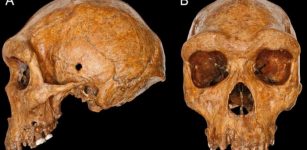 Skull From Broken Hill, Zambia Is Relatively Young – New Analysis Shows
Fossils | Apr 2, 2020
Skull From Broken Hill, Zambia Is Relatively Young – New Analysis Shows
Fossils | Apr 2, 2020 -
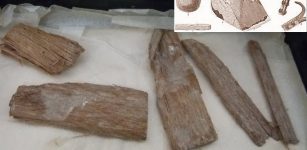 Great Pyramid Puzzle: ‘Lost’ 5,000-Year-Old Piece Of ‘Dixon Relics’ Accidentally Found
Archaeology | Dec 17, 2020
Great Pyramid Puzzle: ‘Lost’ 5,000-Year-Old Piece Of ‘Dixon Relics’ Accidentally Found
Archaeology | Dec 17, 2020


